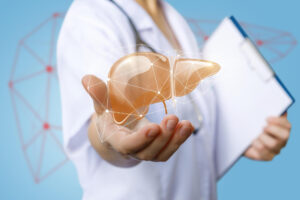Healthy Living
The Transformative Power of Creative Arts Therapy
Creative Arts Therapy emerges as a crucial intervention in today’s stress-filled world, providing a unique blend of artistic expression and psychological care to foster emotional well-being. This form of psychotherapy leverages various art forms—including music, dance, drama, writing, and visual arts—to enable non-verbal expression, allowing individuals to tap into deep psychological states within a supportive environment. It focuses not on the artistic outcome but on the therapeutic process of creation for healing and growth.
The therapy offers extensive benefits, such as facilitating emotional release, enhancing self-awareness and insight, reducing stress, improving cognitive function, and bolstering communication skills. Its inclusivity makes it beneficial for a wide range of individuals, including children, adolescents, adults, those with physical health issues, and people experiencing trauma.
Creative Arts Therapy can be practiced in diverse settings like private practices, hospitals, schools, community centers, and online platforms, ensuring accessibility for many. It stands as a powerful testament to the healing capacities of creativity, providing a holistic approach to wellness that nurtures the mind, body, and soul, and promotes a journey of self-discovery and healing through the universal language of the arts.
Read More10 Tips to Protect Your Liver
The liver, a critical organ responsible for vital functions such as toxin filtration, digestion, and metabolism, is integral to our overall health. Yet, it is vulnerable to damage from lifestyle choices and environmental factors. Ensuring liver health is essential, and here are ten actionable tips to protect this key organ:
Adopt a Balanced Diet: Consume a variety of nutrient-rich foods, including fiber-rich fruits, vegetables, and whole grains, along with lean protein and healthy fats.
Stay Hydrated: Water is crucial for liver function, helping to metabolize fats and flush out toxins.
Limit Alcohol and Tobacco: These substances can severely harm the liver, leading to diseases such as fatty liver, hepatitis, and cirrhosis.
Exercise Regularly: Physical activity helps maintain a healthy weight and reduces the risk of fatty liver disease.
Maintain a Healthy Weight: Obesity is a major risk factor for non-alcoholic fatty liver disease (NAFLD), making weight management critical.
Use Medications and Supplements Wisely: Overuse or misuse can damage the liver; always adhere to recommended dosages and consult healthcare providers.
Avoid Toxins: Minimize exposure to harmful chemicals in products and the environment, using protective gear when necessary.
Practice Safe Sex: Protect against hepatitis B and C, viruses that can lead to significant liver damage, by using protection and getting vaccinated.
Undergo Regular Check-ups: Early detection of liver issues through medical screenings is crucial for effective treatment.
Stay Informed About Vaccinations: Vaccines offer protection against hepatitis A and B, critical for those at higher risk.
By embracing these lifestyle choices and preventive measures, you can significantly contribute to the health and longevity of your liver, ensuring it continues to support your overall wellbeing. Prevention, as always, is the most effective strategy for maintaining liver health.
Tackling the Global Obesity Epidemic: Strategies for Prevention and Health Improvement
Obesity has rapidly become a global epidemic, impacting millions and increasing the risk of diseases like type 2 diabetes, cardiovascular disease, and cancer. This complex issue goes beyond personal choices, entangled with genetic, environmental, and societal factors. Addressing obesity demands a comprehensive strategy that emphasizes prevention alongside treatment.
Obesity is often gauged by Body Mass Index (BMI), though this metric has its limitations. The rise in obesity is fueled by various factors: genetic predispositions, high-calorie diets, sedentary lifestyles due to technological advancements, socioeconomic barriers to healthy living, and psychological stressors.
To combat this, prevention strategies are essential at both individual and community levels. Individuals are encouraged to adopt balanced diets, engage in regular physical activity, practice mindful eating, and ensure adequate sleep. On a broader scale, urban planning can promote physical activity, while policies could focus on healthier food options and education. Healthcare providers should also play a proactive role in addressing obesity.
Crucially, it’s important to tackle obesity without stigma, understanding its multifaceted nature and promoting positive lifestyle changes rather than focusing solely on weight loss.
The fight against the obesity epidemic requires a united effort to encourage healthier lifestyles, foster supportive environments, and provide equitable access to healthful choices. By confronting the root causes and promoting health and wellness, a healthier future is within reach.
Read More


